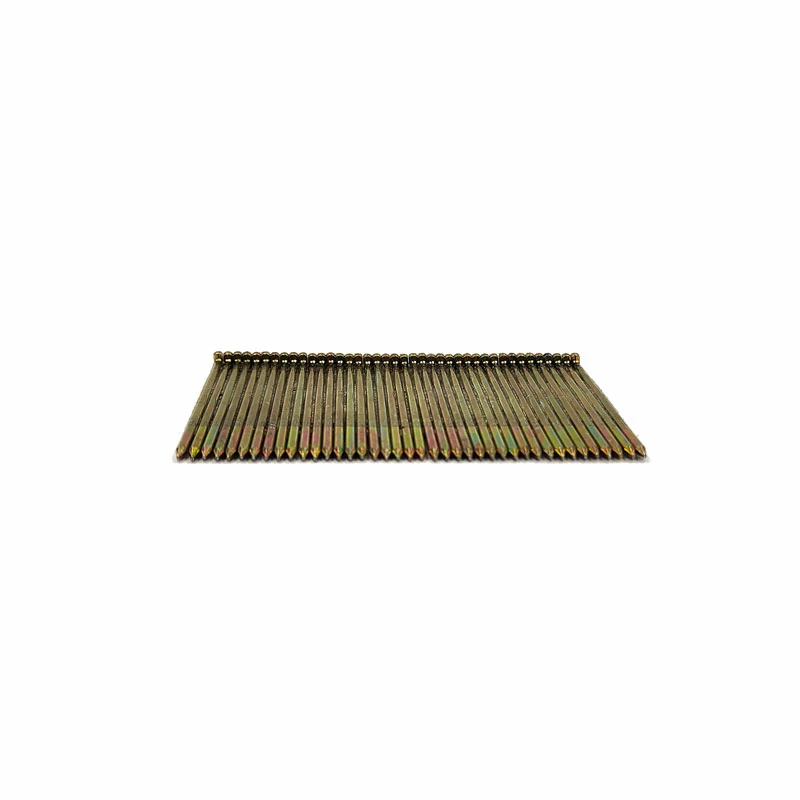Exposure to UV (ultraviolet) radiation can affect the durability and performance of brad nails in several ways:
- Material Degradation: Some types of brad nails are made from materials that can degrade when exposed to UV radiation over time. For example, certain coatings or finishes on brad nails may break down or become brittle, leading to reduced durability and performance.
- Corrosion Resistance: UV exposure can accelerate the corrosion or oxidation of brad nails, especially if they are made from materials like steel. This can weaken the nails and compromise their holding power, leading to loosening or failure of the fastened materials.
- Color Fading: The color of brad nails may fade or change over time with prolonged exposure to UV radiation. This can affect the appearance of the fastened materials and may be particularly noticeable with colored or coated brad nails.
- Impact on Wood: UV radiation can also impact the wood surrounding the brad nails. Brad nails Over time, UV exposure can cause wood to dry out, shrink, or become brittle, which may affect the holding power of the brad nails and lead to loosening or splitting of the fastened materials.
To mitigate the effects of UV radiation on brad nails, consider the following measures:
- Choose brad nails made from materials that are UV-resistant or coated with protective finishes that can withstand UV exposure.
- Use brad nails with appropriate coatings or treatments designed to enhance their resistance to corrosion and degradation.
- Limit the exposure of brad nails to direct sunlight or UV radiation by installing them in shaded areas or using protective coverings or coatings.
- Regularly inspect brad nails for signs of corrosion, degradation, or color fading, and replace any damaged or deteriorated nails as needed.
- Consider using alternative fastening methods or materials in applications where brad nails are likely to be exposed to prolonged UV radiation, such as outdoor construction projects or installations in sun-exposed areas.
Overall, while brad nails can be a reliable fastening option in many applications, it’s important to consider the potential effects of UV radiation on their durability and performance, especially in outdoor or sun-exposed environments. By choosing appropriate materials and taking preventive measures, you can help ensure that brad nails maintain their effectiveness and longevity over time.
How resistant are concrete brad nails to corrosion and rust?
Concrete brad nails, also known as concrete nails or masonry nails, are specifically designed for fastening materials to concrete, brick, or other masonry surfaces. These nails are typically made from hardened steel or other corrosion-resistant materials to withstand the harsh conditions encountered in masonry applications.
Here’s how resistant concrete brad nails are to corrosion and rust:
- Corrosion Resistance: Concrete brad nails are often manufactured with coatings or treatments that enhance their resistance to corrosion. Common coatings include galvanized finishes, which involve applying a layer of zinc to the surface of the nails to provide protection against rust and corrosion. Some concrete brad nails may also be coated with epoxy or polymer coatings to further enhance their durability and resistance to moisture and chemicals.
- Galvanized Finishes: Galvanized concrete brad nails are among the most corrosion-resistant options available. The zinc coating provides a sacrificial layer that corrodes preferentially to the steel substrate, protecting the underlying metal from rust and corrosion. Galvanized nails are particularly well-suited for outdoor applications or environments with high humidity or exposure to moisture.
- Stainless Steel: Some concrete brad nails are made from stainless steel, which is inherently resistant to corrosion and rust due to its chromium content. Stainless steel nails are highly durable and can withstand exposure to harsh environmental conditions, concrete brad nails making them suitable for both indoor and outdoor masonry applications.
- Environment-Specific Considerations: While concrete brad nails are generally resistant to corrosion and rust, the level of resistance may vary depending on factors such as the type of coating or treatment used, the quality of the nail manufacturing, and the specific environmental conditions in which the nails are used. For example, nails used in coastal areas or industrial environments may require more robust corrosion protection than those used in inland or residential settings.
- Proper Installation: Proper installation techniques can also help to maximize the corrosion resistance of concrete brad nails. It’s important to drive the nails fully into the masonry substrate using a hammer or pneumatic nail gun to ensure secure fastening and minimize exposure of the nail shaft to moisture or corrosive elements.
In summary, concrete brad nails are generally resistant to corrosion and rust, especially when they are made from high-quality materials and coated with protective finishes such as galvanized coatings or stainless steel. However, it’s essential to choose the appropriate type of nail for the specific application and environment and to follow proper installation practices to ensure long-lasting performance and durability.
